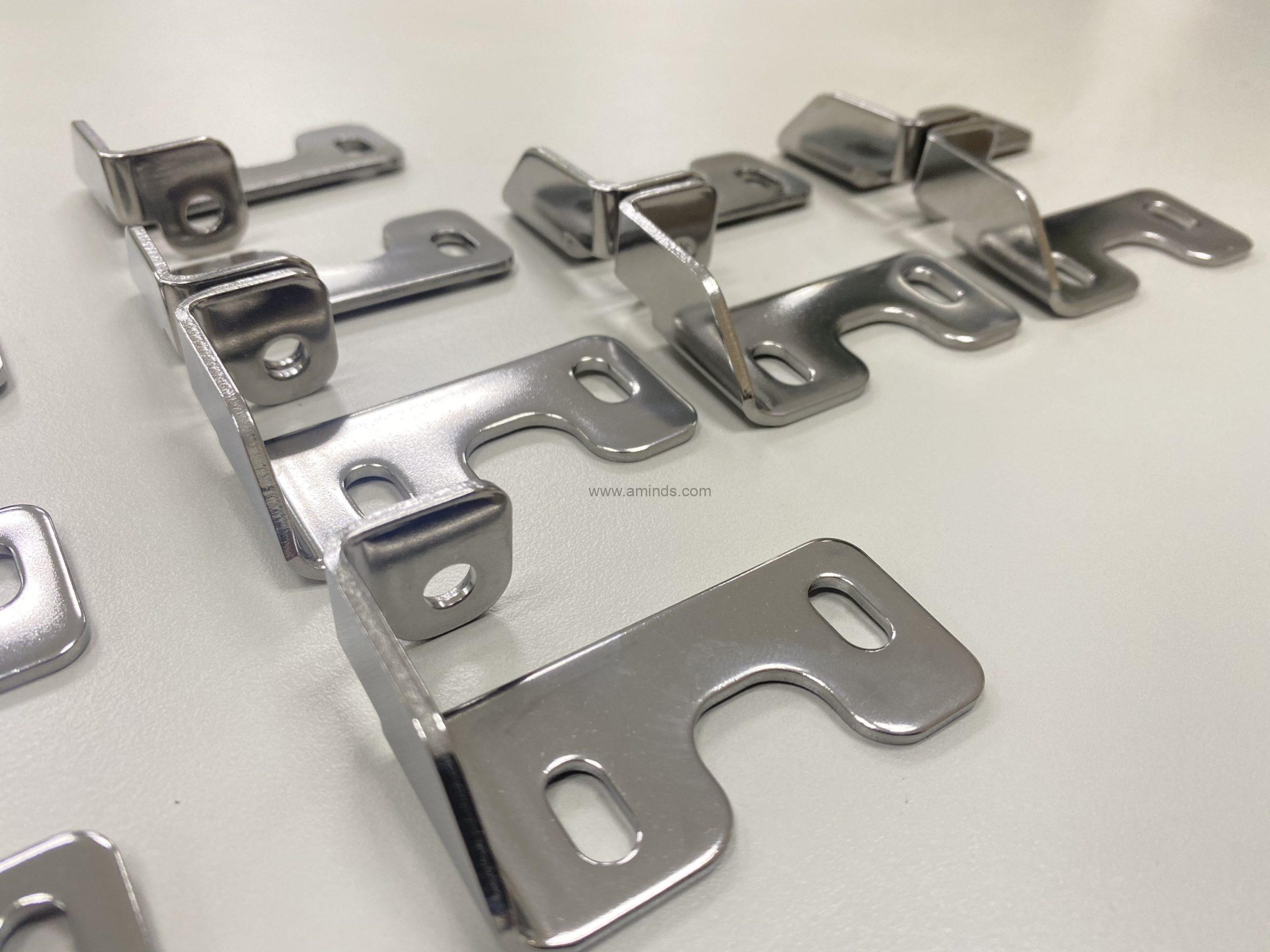Necessary Tools and Devices for Effective Metal Stamping Operations
Necessary Tools and Devices for Effective Metal Stamping Operations
Blog Article
Metal Stamping Advancements: Elevating Manufacturing Processes for Superior Outcomes
In the realm of producing procedures, metal stamping has long been a foundation strategy for producing a range of precision elements. With the unrelenting march of technological improvement, the landscape of steel stamping is undergoing a significant transformation.
Advancement of Steel Stamping Methods

Additionally, improvements in product scientific research have resulted in the growth of high-strength alloys that can currently be effortlessly marked into detailed shapes, dealing with a more comprehensive range of industrial applications. The combination of robotics and expert system has actually further enhanced the stamping process by improving rate and precision while decreasing the threat of human mistake.

Impact of Advanced Materials
Have innovative products transformed steel marking procedures substantially in the production industry? By making use of materials such as high-strength alloys, advanced compounds, and cutting-edge finishings, metal stamping procedures can currently generate components that are lighter, more powerful, and extra durable than ever in the past.
These innovative materials offer premium mechanical properties, corrosion resistance, and thermal security, enabling manufacturers to fulfill the demands of contemporary industries such as aerospace, auto, and electronics. Additionally, the use of sophisticated products in steel marking has actually assisted in the manufacturing of complex geometries and complex layouts that were previously unattainable via typical methods.
Moreover, the application of advanced products has actually caused lowered material waste, lower production expenses, and much shorter preparations, making steel stamping processes much more sustainable and economical. As modern technology continues to breakthrough, the effect of innovative products on metal marking processes is expected to drive more innovation and improve the competitiveness of makers in the international market.
Automation in Metal Stamping
The evolution of steel stamping procedures driven by the integration of sophisticated materials has actually set the stage for substantial improvements in automation within the manufacturing sector. Automation in metal marking has revolutionized production processes, boosting efficiency, accuracy, and total result high quality. Through the usage of robotics, sensing units, and computer-controlled systems, jobs that were once hand-operated and lengthy can currently be implemented with unrivaled rate and accuracy.
Automation in steel marking not only speeds up production prices yet also makes sure consistency in the production procedure. By lessening human treatment, the risk of mistakes is significantly lowered, leading to higher degrees of product uniformity and reliability. Furthermore, automation makes it possible for makers to embark on intricate marking tasks that would be tough or impractical to achieve by hand.
Additionally, automation in steel stamping contributes to a safer working atmosphere by decreasing the demand for employees to engage in recurring or hazardous jobs - Metal Stamping. This shift in the direction of automation not only improves productivity however likewise leads the way for the future of production, where technology plays a central function in driving functional excellence
High Quality Control and Evaluation Solutions
With a focus on accuracy and integrity, quality control and inspection systems play an essential duty in making sure product quality in metal marking procedures. These systems are developed to check every phase of manufacturing, from material examination to the end product, to assure that all components fulfill the called for official site criteria. By carrying out innovative innovations such as optical assessment systems, coordinate measuring devices (CMM), and automated evaluating equipment, manufacturers can identify also the smallest variances in measurements, surface quality, and total stability of stamped components.

Sustainability Practices in Steel Stamping
Building upon the structure of precision and dependability developed through quality control and examination systems, the combination of lasting techniques in metal marking processes is increasingly becoming a prime focus for producers seeking to decrease environmental impact and optimize resource application. Sustainability methods in metal stamping include a variety of efforts intended at minimizing waste generation, energy consumption, and greenhouse gas emissions throughout the production process.
One trick element of sustainability in steel stamping is the fostering of environmentally friendly products and modern technologies that promote recyclability and waste reduction. By utilizing recycled materials and applying energy-efficient machinery, suppliers can lower their carbon footprint and add to an extra lasting manufacturing cycle. Furthermore, enhancing manufacturing procedures to reduce product waste and energy use not only profits the atmosphere however also causes cost savings for businesses in the lengthy run.
In addition, the execution of sustainable practices in steel marking can improve brand credibility and interest ecologically mindful customers. As sustainability continues to obtain importance in the manufacturing sector, incorporating environmentally friendly campaigns right into metal marking procedures is vital for lasting success and competitiveness in the marketplace.
Final Thought
In verdict, metal marking strategies have substantially progressed over time, integrating sophisticated products and automation to boost manufacturing processes. Quality assurance and inspection systems play a vital duty in making certain exceptional outcomes, while sustainability practices are significantly being executed to lower environmental effect. These developments in metal marking have revolutionized the market, bring about more effective and lasting production approaches for various markets.
Steel stamping, as soon as a manual and labor-intensive procedure, has changed into an extremely automated and innovative technique of website here forming steel sheets right into various forms and designs.Have innovative materials changed steel marking processes dramatically in the production market? By using materials such as high-strength alloys, advanced compounds, and ingenious finishes, steel marking processes can now produce elements that are lighter, more powerful, and more sturdy than ever in the past.
The development of metal visit homepage stamping procedures driven by the assimilation of innovative products has set the phase for substantial innovations in automation within the manufacturing industry.In final thought, metal marking strategies have substantially developed over time, integrating sophisticated materials and automation to boost making processes.
Report this page